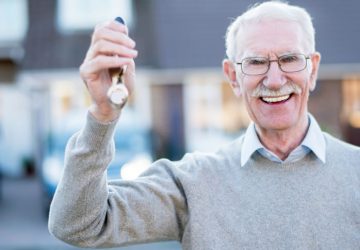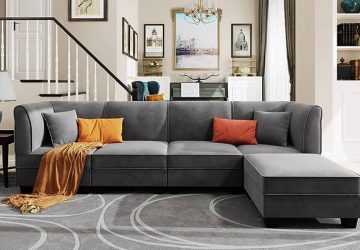Step by step instructions to Protect Your Senior Condo for Ideal Wellbeing and Solace

Guaranteeing the wellbeing and security of a senior loft is central in cultivating a living climate that is helpful for genuine serenity, prosperity, and by and large solace. This guide portrays complete methodologies and fundamental tips that are instrumental in protecting a senior condo, upgrading its wellbeing highlights, and developing a feeling of safety and readiness inside the living climate. The goal is to sustain the living space against expected dangers, perils, and weaknesses, guaranteeing that the condo is ideally prepared to take special care of the security and prosperity of its inhabitants.
67+ Virtuoso Little known techniques You'll Wish You Knew Sooner
Introduce Crisis Ready Frameworks:
Consolidate crisis ready frameworks that work with prompt help with instance of crises. Frameworks, for example, clinical ready gadgets and crisis call buttons upgrade the responsiveness and backing accessible during unforeseen circumstances.
Guarantee Legitimate Lighting:
Outfit the condo with satisfactory lighting to forestall mishaps and upgrade perceivability. Consider movement sensor lights and nightlights in foyers, washrooms, and rooms to enlighten ways and decrease the gamble of falls during the evening.
Introduce Smoke and Carbon Monoxide Locators:
Introduce and keep up with smoke and carbon monoxide locators to shield against potential fire risks and harmful gas openness. Guarantee that locators are practical, and batteries are routinely supplanted.
Secure Mats and Covers:
Secure mats, covers, and floor covers to forestall slipping and stumbling risks. Use non-slip underlays and guarantee that edges are immovably joined to the floor to upgrade steadiness and security.
Execute Security Estimates in Restrooms:
Consolidate security highlights in washrooms, for example, snatch bars, non-slip mats, and shower seats. These highlights upgrade soundness and backing during washroom exercises, diminishing the gamble of slips and falls.
Put together and Clean up Spaces:
Keep up with coordinated and mess modest spaces to enhance versatility and forestall stumbling risks. Guarantee that pathways are clear, and things are safely put away to keep a flawless, danger modest climate.
Secure Windows and Entryways:
Guarantee that windows and entryways are safely locked and furnished with hearty locking components. Consider introducing security bars or grilles on windows to upgrade wellbeing against possible interruptions.
Introduce a Security Framework:
Consider introducing a security framework that incorporates cautions, cameras, and doorbell cameras to screen the loft's environmental factors and upgrade protection from likely dangers.
Oversee Strings and Plugs:
Oversee and sort out electrical ropes and outlets to forestall stumbling perils and electrical dangers. Use rope coordinators, and guarantee that lines are avoided walkways and high-traffic regions.
Normal Upkeep and Investigations:
Plan normal upkeep and investigations of apparatuses, warming frameworks, and electrical establishments to guarantee that they are working securely and effectively.
End
Protecting a senior loft includes a comprehensive methodology that envelops different wellbeing measures, insurances, and improvements to enhance the security and prosperity of the living climate. This guide gives an extensive investigation of fundamental techniques and contemplations that add to making a protected, secure, and agreeable senior condo. By carrying out these rules, one can develop a living space that is sustained against gambles, furnished with steady highlights, and helpful for genuine serenity and trust in everyday living.
67+ Virtuoso Little known techniques You'll Wish You Knew Sooner
Introduce Crisis Ready Frameworks:
Consolidate crisis ready frameworks that work with prompt help with instance of crises. Frameworks, for example, clinical ready gadgets and crisis call buttons upgrade the responsiveness and backing accessible during unforeseen circumstances.
Guarantee Legitimate Lighting:
Outfit the condo with satisfactory lighting to forestall mishaps and upgrade perceivability. Consider movement sensor lights and nightlights in foyers, washrooms, and rooms to enlighten ways and decrease the gamble of falls during the evening.
Introduce Smoke and Carbon Monoxide Locators:
Introduce and keep up with smoke and carbon monoxide locators to shield against potential fire risks and harmful gas openness. Guarantee that locators are practical, and batteries are routinely supplanted.
Secure Mats and Covers:
Secure mats, covers, and floor covers to forestall slipping and stumbling risks. Use non-slip underlays and guarantee that edges are immovably joined to the floor to upgrade steadiness and security.
Execute Security Estimates in Restrooms:
Consolidate security highlights in washrooms, for example, snatch bars, non-slip mats, and shower seats. These highlights upgrade soundness and backing during washroom exercises, diminishing the gamble of slips and falls.
Put together and Clean up Spaces:
Keep up with coordinated and mess modest spaces to enhance versatility and forestall stumbling risks. Guarantee that pathways are clear, and things are safely put away to keep a flawless, danger modest climate.
Secure Windows and Entryways:
Guarantee that windows and entryways are safely locked and furnished with hearty locking components. Consider introducing security bars or grilles on windows to upgrade wellbeing against possible interruptions.
Introduce a Security Framework:
Consider introducing a security framework that incorporates cautions, cameras, and doorbell cameras to screen the loft's environmental factors and upgrade protection from likely dangers.
Oversee Strings and Plugs:
Oversee and sort out electrical ropes and outlets to forestall stumbling perils and electrical dangers. Use rope coordinators, and guarantee that lines are avoided walkways and high-traffic regions.
Normal Upkeep and Investigations:
Plan normal upkeep and investigations of apparatuses, warming frameworks, and electrical establishments to guarantee that they are working securely and effectively.
End
Protecting a senior loft includes a comprehensive methodology that envelops different wellbeing measures, insurances, and improvements to enhance the security and prosperity of the living climate. This guide gives an extensive investigation of fundamental techniques and contemplations that add to making a protected, secure, and agreeable senior condo. By carrying out these rules, one can develop a living space that is sustained against gambles, furnished with steady highlights, and helpful for genuine serenity and trust in everyday living.
Share this article
 Experiences in Natural life Protection: Individual Progressives' Excursions
Experiences in Natural life Protection: Individual Progressives' Excursions Turning into a Sharp Financial backer: Individual budget Wins
Turning into a Sharp Financial backer: Individual budget Wins The most effective method to Promoter for Cutthroat Medical attendant Compensations in Your Medical services Office
The most effective method to Promoter for Cutthroat Medical attendant Compensations in Your Medical services Office 5 Breakout Stars in Late television Series
5 Breakout Stars in Late television Series 4 Dazzling And Well known Island Objections In US
4 Dazzling And Well known Island Objections In US Find the Interesting Universe of Computerized reasoning: the Capability of man-made intelligence
Find the Interesting Universe of Computerized reasoning: the Capability of man-made intelligence Step by step instructions to Shield Your Wellbeing Around 5G Pinnacles\
Step by step instructions to Shield Your Wellbeing Around 5G Pinnacles\ Ten Awesome Authentic Realities That Will Leave You Interested
Ten Awesome Authentic Realities That Will Leave You Interested 6 Pet Sitting Administrations for Your Dearest Pets
6 Pet Sitting Administrations for Your Dearest Pets













